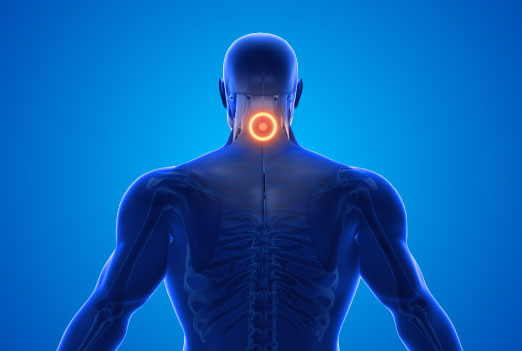
Understanding Trigger Points: Your Guide to Muscle Knots and Pain Relief
Trigger points, commonly referred to as muscle knots, are a prevalent source of pain for many. These tiny, tight areas within the muscle or fascial tissue can cause significant discomfort and are often responsible for what’s known as referred pain, where the pain is felt not just in the localized area, but also in patterns far from the source. This comprehensive guide delves into what trigger points are, how they form, their symptoms, and effective treatments for relief.
What is a Trigger Point?
A trigger point is essentially a small, tight area in your muscle tissue that can cause pain over a large area. Think of them as “knots” in your muscles; they are palpable nodules or bands within the muscle fibers. These points are highly sensitive and can either be active or latent. Active trigger points cause persistent pain, while latent ones act as potential sources of muscle pain when they become aggravated.
Trigger points are interesting because they can cause symptoms that mimic other conditions. For example, a trigger point in the neck might send pain into the head, mimicking tension headaches or migraines.
How Do Trigger Points Form?
The exact mechanisms behind the formation of trigger points are still a subject of research, but several theories and contributing factors have been identified:
- Muscle Overload: This is the most common cause, whether due to acute injury, repetitive motion, or chronic overuse.
- Poor Posture: Long periods of sitting or standing in poor posture can stress certain muscle groups, leading to the development of trigger points.
- Stress and Anxiety: These emotional states often lead to involuntary tightening of the muscles, particularly in the neck and back, which can create trigger points.
- Nutritional Deficiencies: Lack of vitamins and minerals may also contribute to the formation of trigger points. For instance, a deficiency in vitamin B12 or vitamin D has been linked to increased muscle pain.
- Sedentary Lifestyle: Lack of exercise can lead to muscle weakness and imbalances, increasing the risk of trigger points.
Symptoms Associated with Trigger Points
Trigger points can cause symptoms that extend beyond simple muscle pain. Here are some of the common symptoms:
- Referred Pain: This pain is felt not just at the site of the trigger point but also in areas around and sometimes at quite a distance from the original point.
- Decreased Range of Motion: The affected muscles may become less flexible, which can limit your ability to move freely.
- Muscle Weakness: Muscles afflicted with trigger points can weaken, affecting your overall strength and function in the involved area.
- Autonomic Phenomena: In some cases, trigger points can cause sweating, tearing of the eyes, or even a sensation of ringing in the ears.
Diagnosing Trigger Points
Diagnosing trigger points typically involves a physical examination where a healthcare provider, such as a physiotherapist, chiropractor, or massage therapist, palpates the muscles to find tender knots. Diagnosis can be tricky because there is no standard test or imaging that can definitively pinpoint a trigger point, making a thorough examination crucial.
Treating and Managing Trigger Points
Fortunately, several treatment options can help alleviate the pain caused by trigger points:
1. Manual Therapies
- Massage Therapy: Professional massage can help release trigger points by increasing blood flow to the area and relaxing the muscle knots.
- Dry Needling: This involves inserting a small needle into the trigger point to break up the knot, which can relieve pain.
- Myofascial Release: This technique applies gentle, sustained pressure into the myofascial connective tissue to reduce pain and restore motion.
2. Heat and Cold Therapy
- Heat Therapy: Applying heat can help relax tightened muscles and increase blood circulation, which aids in healing.
- Cold Therapy: Using ice packs can reduce inflammation and numb deep pain, providing temporary relief.
3. Exercise and Stretching
- Engaging in targeted stretching exercises can improve flexibility and relieve tension in muscles that contain trigger points. Your therapist can provide specific exercises that target the problematic areas.
4. Medication
- Sometimes, over-the-counter pain relievers or anti-inflammatory medications are recommended to manage pain and swelling associated with trigger points.
5. Lifestyle Modifications
- Addressing factors such as posture, ergonomics at work, nutrition, and stress management can help prevent the formation of new trigger points and alleviate existing ones.
Choose Neurosurgery & Spine Consultants for Trigger Point Relief
Understanding what trigger points are and recognizing the symptoms can be the first step towards finding relief from chronic muscle pain. While these muscle knots can be painful and disruptive, the good news is that there are effective treatments available. If you suspect that trigger points are the source of your pain, consider consulting with a healthcare provider skilled in diagnosing and treating this condition. With the right approach, it’s possible to achieve significant improvement in both pain and function, leading to a better quality of life.
DISCLAIMER: No content on this site, regardless of date, should ever be used as a substitute for direct medical advice from your doctor or other qualified clinician.